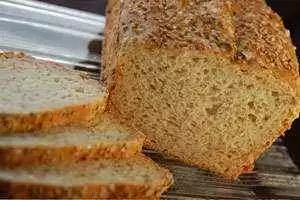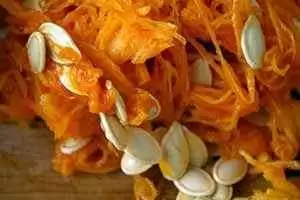
- Correctly measure your flour. When measuring flour, don’t scoop from the bag with your measuring cup. This compresses the flour. Use a spoon to scoop flour into the measuring cup and level off with a knife. This will ensure that your flour is measured properly.
- Bring your ingredients to room temperature before mixing. It is particularly important for yeast recipes to bring all of your ingredients, such as eggs, to room temperature before adding them together to make bread. Yeast needs warmth to grow and if your ingredients are too cold, it may prevent full yeast growth.
- Make sure your loaf of bread is actually fully cooked. It is very important not to take your bread out of the oven before it is fully cooked. If the bread has a rubbery layer at the bottom, this usually means it was not fully cooked. The best way to tell if the bread is done is to take a baking thermometer and insert it all the way into the bottom of the loaf. The temperature should be approximately 210 F when it is done. Your bread will keep its shape better overcooked than undercooked, so if in doubt, keep it in the oven a bit longer! My recipes have plenty of moisture, so you shouldn’t worry too much about the bread drying out.
- If baking by oven method, use metal pans. I have found that glass bread pans do not work as well as metal pans in fully cooking a loaf of bread. Metal pans do not have to be fancy or expensive, and you can often even find them in your local grocery store.
- Rising issues. A great method for letting your yeast breads rise before baking is to turn on your oven to 200F, then turn it off when it has reached temperature. Put your un-raised bread into the warmed oven with an oiled piece of wax paper on top and let it rise according to directions. Once raised, removed the wax paper and bake according to directions.
- How to prevent your bread from sinking. When your bread is done cooking, turn off the oven and open the door so that the bread can cool slowly. Taking the bread out of a hot oven and quickly transferring it to a cool counter can sometimes cause the loaf to sink in. If it still sinks, it may have too much moisture in it to support itself fully. It should still taste great, but if you have your heart set on a nice crowned loaf, next time try cutting back on the liquid a bit in that recipe or adding ¼ cup of flaxseed meal to help support the bread's structure and enhance its nutritional value, all in one! Altitude and even the day's weather can affect sometimes picky yeast recipes.
- How to make a multi-grain loaf of bread. To make a more “whole grain” bread, take a basic recipe (for example, Jules’ Sandwich Bread recipe). In place of the 2 cups of Jules Gluten Free All Purpose flour, add only 1 ¾ cups. Replace the final ¼ cup with flax seed meal, buckwheat flour, gluten-free oat flour, brown rice flour, or teff flour. These flours will add more whole grain flavor and additional fiber. You can also add seeds (flax seeds, sesame seeds, etc.) to add crunch and fiber. With this amount of different flours, you do not need to adjust the recipe at all.








Recommended Comments